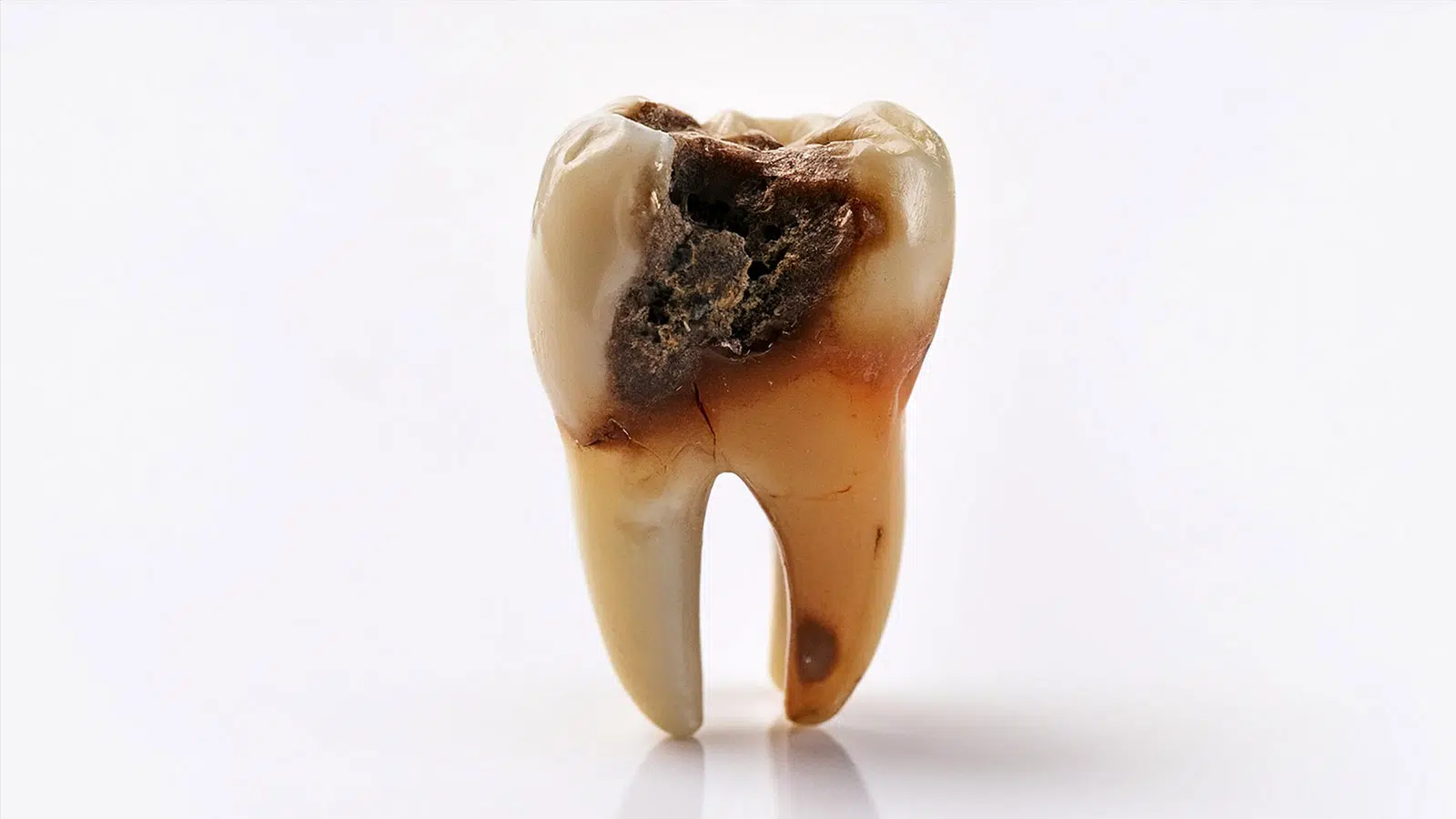Tooth decay is a problem that affects people of all ages and is one of the most common dental issues that needs to be treated promptly. If left untreated, it can lead to severe pain, infections, and even tooth loss. So, what is tooth decay, and how does it occur?
Tooth decay is permanent damage to the tooth’s surface (enamel) caused by acids produced by bacteria that attack the enamel, leading to the formation of cavities or holes in the teeth.
Tooth decay occurs in several stages and causes gradual destruction of the tooth’s structure:
- Tooth decay begins with the accumulation of plaque on the tooth’s surface, which is a sticky layer of bacteria, saliva, and food debris.
- Bacteria feed on sugars and produce acids that attack the tooth enamel.
- Over time, these acids erode the enamel, and as the erosion continues, small cavities form in the enamel, known as decay.
- If the decay is not treated, these cavities grow larger and reach the dentin.
- If left untreated, the decay reaches the tooth pulp and nerves, causing severe pain and potentially leading to infections or abscesses.
Symptoms of Tooth Decay:
- Toothache.
- Appearance of white or brown spots on the tooth’s surface.
- Tooth sensitivity, especially when consuming hot or cold foods.
- Bad breath.
- Visible holes or cavities in the teeth.
Methods of Treating Tooth Decay:
The treatment method for tooth decay depends on the stage of decay and the extent of tooth damage.
- Fluoride:
In the very early stages of decay, fluoride can be used to remineralize the tooth enamel and repair minor damage. Fluoride is applied by a dentist in the clinic. - Fillings:
If the decay has caused a cavity but is not large, the dentist can remove the damaged part of the tooth and fill the cavity with a filling. These fillings are made of materials such as composite resin or amalgam. - Dental Crowns:
If the decay is extensive and has weakened the tooth’s structure, the dentist may need to place a crown to protect the tooth and restore its natural shape. - Root Canal Treatment:
If the decay reaches the tooth’s nerve, the dentist removes the damaged nerve, cleans the root canal, and then seals it, protecting the tooth with a crown. - Tooth Extraction:
In severe cases where the tooth is extensively damaged and cannot be saved, the dentist may extract it to prevent the spread of infection. The extracted tooth can be replaced with a bridge or dental implant.
Tooth decay is a common problem and should be treated quickly before it worsens. If you notice any symptoms of decay, do not hesitate to visit your dentist immediately to receive the appropriate treatment.


